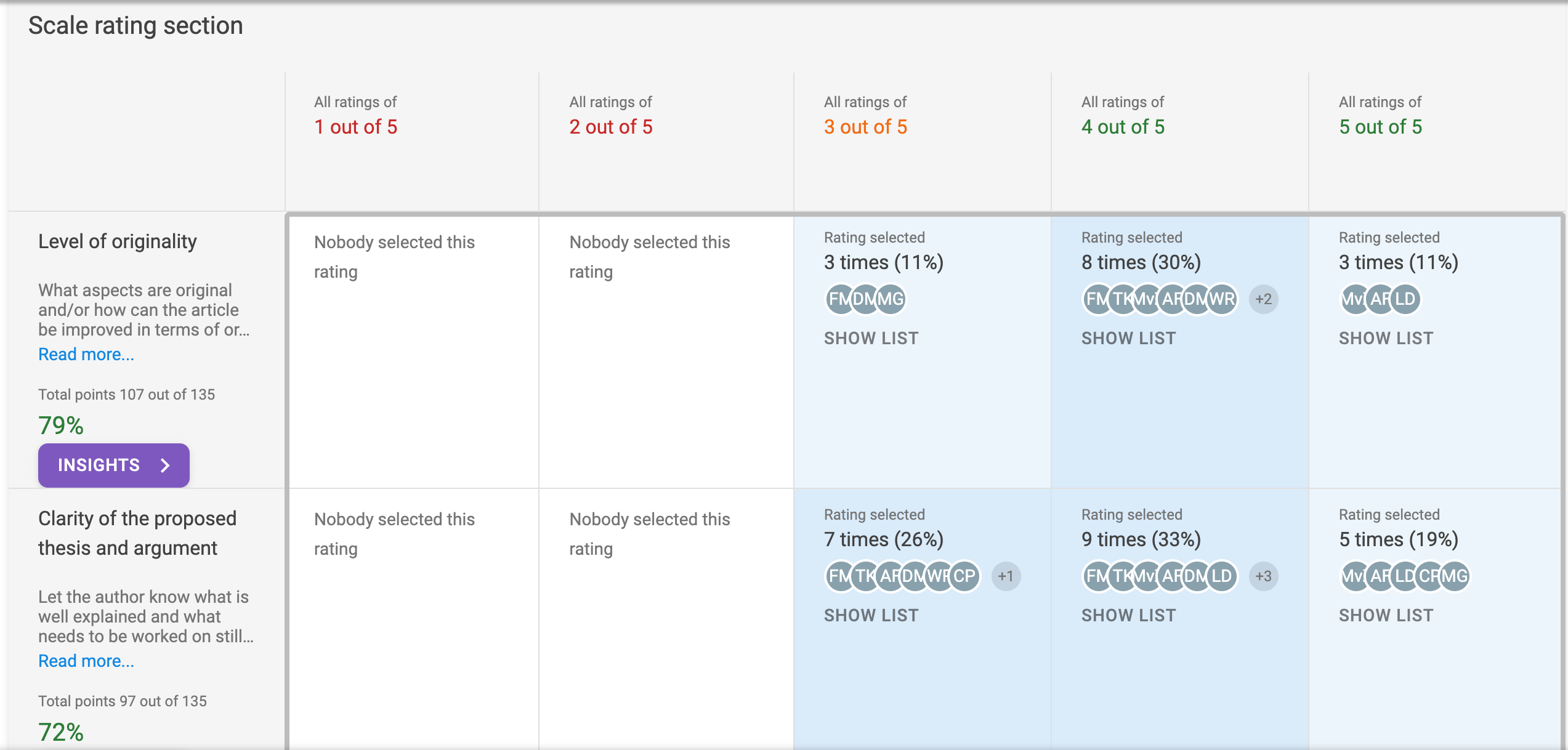Peer feedback by students and experts
This is a best practice from the Teaching & Learning Innovation project.
Sent in by: Pieter Verstraete.

Brief description
Keywords: Peer feedback; FeedbackFruits; Peerceptive; Professionals in the class; self-reflection; essay;
Brief description
In the MA module Music, Theatre, Sound, Pieter Verstraete used FeedbackFruits and gave the students the opportunity to interview and speak to professionals other than the lecturer. By doing so, the students can steer their own learning processes and career paths driven by their own questions. Peerceptive was a good tool for students to read their own essay abstracts and comment on them, as long as the lecturer also monitors the process closely. In this way, students learn from each other while reading different feedbacks. It also allows them to finetune their ideas and ways of formulating the argument, before they submit it officially. In the end, they can monitor their own progress through a concept version of their essays and the results they get along the way. They can also self-reflect on their writing process in response to the feedback, so it helps them to realistically estimate which efforts are needed to improve their essays. It makes, hopefully, writing essays more interactive and stimulating rather than a source for frustration and anxiety.
Student engagement
The students were amazed by the input they got, both from professionals and from their own peers. Yet it did add on some more workload and it is unclear to them how FeedbackFruits grades their efforts. It is key to keep an eye on the end results in the Gradebook and tweak them before publication.
Other characteristics (group size, advantages, challenges, etc.)
Group size
12 students, each peer reviews 3 fellow students
Length of the activity
Spread over two weeks and a half
Difficulty level
[On a scale of 1-5 (1= very easy, 5 = a lot of preparation)]
3
Preparation
Before class: It took a while to set up the FeedbackFruits assignment on Brightspace but the Brightspace support team was very helpful in helping to set it up. It took about 3-4 hours to finetune the assignment and tweak all the parameters that are being assessed.
In class: Once the system is running, you can still make changes but the work is done. As a teacher, it is still important to add your own feedback to the work of the students, which might take another hour or two for 12 students, but you can rely on it that students will pick up on the major issues themselves, so the feedback writing goes much quicker.
Advantages
The biggest advantage is that MA students feel treated as co-participants in the development of their peers. They are already at an advanced level, so they are more than capable of giving each other feedback.
Challenges
It is important to set the parameters for assessment right and to remind the students to be kind to each other, giving a good balance of positive and negative feedback, focusing on what can improve.
Targeted Learning outcomes
-
conduct independent research, based on source research
-
formulate a sophisticated argument in written form in a clear, straightforward and well-argued manner
-
present their work and insights to an academic audience (peers) and comment on the work of others orally and/or in writing in an atmosphere of mutual respect
Workload reduction
The activity reduces some workload for the teacher by the end of the process, but some extra time investment is needed to set FeedbackFruits up in the beginning. Once made, the assignment can also be transferred to the Brightspace copy of the same module in the future. So its effect on workload is exponential and it can become a fixed value.
Additional Information
Additional tools/material/resources
Initially, Pieter used Peerceptive for peer feedback. As the UG has dicontinued the Peerceptive license, Pieter has switched to FeedbackFruits - Peer review.
Additional information
After the peer review, students submit a revised version of their paper via an assignment in Brightspace. Pieter comments on this version and gives a grade, linked to a tutorial. While this is still formative, it turns out to be an extra incentive to do even better on the final version of the paper. This way, the draft versions have been commented on by the students and the tutor can focus on some crucial additional points.
| Last modified: | 31 October 2023 09.10 a.m. |
